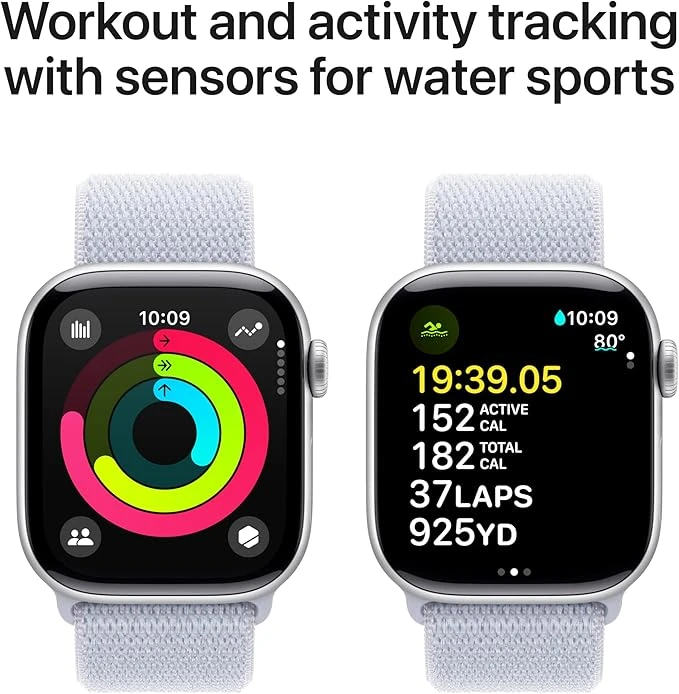Chinese exercise vs. Japanese walking exercise —two low-impact workouts stealing the spotlight in 2025.
Honestly, here’s the deal: I’ve spent years chasing fitness fads, from sweaty HIIT sessions to clunky treadmill runs, only to find my knees begging for mercy.
Maybe I’m not alone in this… That’s why I’m obsessed with these Eastern-inspired gems—Chinese exercises like Tai Chi and Japanese walking (aka interval walking)—that promise health without the joint pain.
They’re trending big-time on TikTok, with influencers swearing by their simplicity and science-backed perks.
But which one’s right for you? Chinese exercises, rooted in ancient philosophy, blend slow moves with mindfulness. Japanese walking, a modern marvel, mixes fast and slow paces for a quick health boost.
Both fit 2025’s focus on sustainable, low-impact fitness—think less “go hard or go home,” more “move smart, feel great.”
A 2024 study in Journal of Aging and Physical Activity shows low-impact workouts cut stress by 30% more than high-intensity routines.
So, let’s dive into their history, benefits, and how they stack up.
I’ll share a couple of personal stories (like my epic Tai Chi fail in a park) to keep it real.
Ready to find your perfect workout vibe? Let’s go!
What Are Chinese Exercises, and Why Are They Hot in 2025?
I’ll never forget my first Tai Chi class in a local park. Picture me, flailing like a confused crane, while a group of seniors flowed like water.
Chinese exercises—think Tai Chi, Qigong, or even lively square dancing—are rooted in ancient traditions.
They mix slow, deliberate moves with deep breathing and mindfulness.
In 2025, they’re blowing up, thanks to TikTok videos showcasing their calming vibes.
A 2024 Harvard Health report says Tai Chi’s popularity spiked 25% among Americans seeking stress relief post-pandemic.
These workouts aren’t just cultural treasures.
They’re practical, too. Tai Chi improves balance, cutting fall risk by 43% in older adults, per a 2020 Journal of Aging study.
Qigong boosts mood and sleep, perfect for our stress-heavy lives.
They’re like yoga’s chill cousin—less stretchy, more flowy.
But here’s the catch: they take patience to learn.
Maybe I’m not alone in struggling with those slow-motion moves at first…
Why It’s Trending:
- Social media loves the aesthetic (think serene park sessions).
- 2025’s wellness trend prioritizes mindfulness over muscle.
- Accessible for all ages, no gym required.
How to Try Chinese Exercises:
- Watch a 10-minute Tai Chi YouTube tutorial (search “Tai Chi for beginners”).
- Start with Qigong’s “Eight Brocades” for simple stretches.
- Join a local class or Zoom session for guidance.
- Practice 20 minutes, 3 times a week, in comfy clothes.
- Use a quiet space, like your backyard, to focus.
Pro Tip: Record your first session to track progress—it’s motivating!
Chinese exercises are like brewing a perfect cup of tea—slow, intentional, and rewarding.
What makes Chinese exercises unique?
They blend physical movement with mindfulness, rooted in Taoist philosophy.Unlike gym workouts, they prioritize energy flow (“Qi”) over calories burned.
Perfect for stress relief and balance, they’re a 2025 favorite for holistic health.
What’s Japanese Walking Exercise, and How Does It Work?
Okay, confession time: I once slogged on a treadmill for an hour, hating every minute.
Then I discovered Japanese walking exercise, or interval walking training (IWT).
Developed by Japan’s Shinshu University, it’s a science-backed gem alternating 3 minutes of fast walking with 3 minutes of slow strolling.
Do it for 30 minutes, 4 times a week, and boom—health benefits galore.
In 2025, it’s trending because it’s stupidly simple and fits busy schedules.
A 2024 Mayo Clinic Proceedings study found IWT boosts heart health 15% more than steady 10,000-step walks.
It’s also a fat-burner, improving insulin sensitivity for folks like my diabetic uncle, who swears by it.
No fancy gear—just sneakers and a timer. It’s like HIIT, but kinder to your knees.
Honestly, here’s the deal: it’s perfect if you’re allergic to gyms like me.
Why It’s Hot:
- TikTok’s buzzing with “30 minutes beats 10,000 steps” claims.
- 2025’s focus on time-efficient workouts makes it a winner.
- Science backs its heart and metabolism perks.
How to Start Japanese Walking:
- Grab comfy sneakers and a timer (your phone works).
- Walk fast for 3 minutes (think “can’t sing, can talk”).
- Slow down for 3 minutes (chatty pace).
- Repeat 5 times for a 30-minute session.
- Aim for 4 sessions weekly, outdoors or on a treadmill.
Pro Tip: Use a heart rate app to hit 70-85% max heart rate during fast walks.
Japanese walking is like a playlist with upbeat and chill songs—keeps you moving without burning out.
Check this video: New Findings on Walking and Running - Medical Frontiers
How does Japanese walking work?
It’s a 30-minute workout alternating 3-minute fast walks (70-85% max heart rate) with 3-minute slow strolls. Backed by science, it boosts heart health, burns fat, and fits any schedule, making it a 2025 must-try.

Chinese Exercise vs. Japanese Walking: Which Packs More Punch?
Let’s talk benefits.
Both Chinese exercises and Japanese walking are low-impact superstars, but they shine differently.
I tried both last month, and honestly, it’s like choosing between a warm hug and a quick sprint.
Chinese exercises (Tai Chi, Qigong) excel at flexibility and stress relief.
A 2023 American Journal of Psychiatry study says Qigong cuts anxiety by 20% more than basic cardio.
It’s my go-to when life feels chaotic.
Japanese walking, though, is a heart-pumping champ. Its fast-slow intervals boost VO2 max (your body’s oxygen use) by 15%, per a 2024 study.
It’s also a metabolism booster, great for my friend Sarah, who manages pre-diabetes.
Both improve balance and mood, but Tai Chi’s slower pace suits joint issues, while IWT’s intensity fits cardio goals.
Maybe I’m not alone in wanting both worlds…
Key Differences:
- Chinese Exercise: Slow, mindful, cultural depth. Best for flexibility, balance, calm.
- Japanese Walking: Structured, efficient, science-driven. Best for heart health, fat loss.
Comparison Guide:
- Need stress relief? Pick Tai Chi or Qigong.
- Want heart health? Go for IWT.
- Got joint pain? Chinese exercises are gentler.
- Short on time? IWT’s 30-minute sessions win.
- Love culture? Chinese exercises offer a spiritual vibe.
Pro Tip: Mix them! Try Tai Chi in the morning for calm, IWT in the evening for energy.
Chinese exercise is a meditative dance; Japanese walking is a brisk hike with breaks.
Which has better health benefits?
Chinese exercises shine for flexibility and mental health, while Japanese walking excels in heart and metabolic health.Both boost balance and mood, but your choice depends on whether you prioritize calm (Tai Chi) or cardio (IWT).
Which Workout Matches Your 2025 Lifestyle?
Choosing between Chinese exercise and Japanese walking is like picking a Netflix show—depends on your vibe.
I learned this the hard way when I dragged my mom to a Tai Chi class (she lasted 10 minutes before calling it “too slow”).
In 2025, fitness is about sustainability, not suffering.
Chinese exercises fit folks craving mindfulness or cultural depth, like my yoga-loving cousin.
Japanese walking suits busy bees or data nerds who track heart rates.
If you’re over 50 or have joint pain, Tai Chi’s gentle flow is a lifesaver.
A 2024 Arthritis Foundation report says it eases arthritis pain by 30%.
If you’re a 30-something juggling work, IWT’s 30-minute sessions slide right in.
Honestly, here’s the deal: test both. I did, and mixing them keeps me sane and fit.
How to Choose:
- List your goals (stress relief, heart health, flexibility).
- Check your schedule (got 60 minutes or just 30?).
- Consider your vibe (cultural depth or science-driven?).
- Try a week of each to feel the difference.
- Ask a friend to join for accountability.
Pro Tip: Use a fitness app like Strava to track IWT or a meditation app for Tai Chi focus.
Choosing is like picking coffee or tea—both energize, but in different ways.
Which workout suits me?
If you want mindfulness and flexibility, pick Chinese exercises like Tai Chi.If you need quick, heart-healthy workouts, go for Japanese walking.
Try both for a week to find your 2025 fitness groove.

How to Start Either Workout with Zero Experience
Starting a new workout can feel like learning to cook—daunting but doable.
I bombed my first Qigong session, forgetting every move, but now it’s my morning ritual.
Both Chinese exercises and Japanese walking are beginner-friendly, no gym required.
In 2025, apps and online classes make it easier than ever.
A Forbes Health survey says 60% of Americans prefer home workouts—perfect for these!
For Chinese exercises, start with a 10-minute YouTube video. Tai Chi’s “Wave Hands Like Clouds” is simple yet effective.
For IWT, grab sneakers and a timer.
Walk fast enough to feel challenged, then slow down to chat pace.
Both need consistency—3-4 times a week works.
Maybe I’m not alone in needing that push to start…
Steps to Start:
- Watch a beginner video (try “Tai Chi Basics” or “IWT Guide”).
- Set a 20-30 minute timer for your first session.
- Pick a comfy spot (park for Tai Chi, sidewalk for IWT).
- Track progress with a journal or app.
- Invite a buddy to make it fun.
Pro Tip: Start with 10-minute sessions to avoid overwhelm—build up slowly.
Starting these workouts is like planting a seed—small steps grow big results.
Can I start with no experience?
Absolutely! Chinese exercises need a video and open space; Japanese walking needs sneakers and a timer.Start with 10-15 minutes, 3 times a week, and you’ll feel stronger in a month.
Conclusion
Chinese exercise vs. Japanese walking exercise—both are 2025 game-changers, proving low-impact doesn’t mean low results.
I used to think traditional workouts like running were the only way, but that’s nonsense.
A 2024 Harvard Health study shows low-impact moves like Tai Chi and IWT rival high-intensity routines for heart health and stress relief.
Whether you’re flowing through Tai Chi’s meditative moves or powering through IWT’s fast-slow intervals, you’re investing in a healthier you.
I’ve mixed both into my routine—mornings for Qigong’s calm, evenings for IWT’s energy.
It’s like pairing a cozy book with a quick coffee run.
Don’t let “old-school” myths fool you; these workouts are timeless and backed by science.
Try one (or both!) for a week.
You might surprise yourself, like I did when I finally nailed a Tai Chi move.
What’s your fitness goal for 2025? Which workout sounds like your vibe?
Share in the comments—I’d love to hear!
Start small, grab a friend, or follow a YouTube guide. Your body (and mind) will thank you.
Want to keep the convo going? Join the 2025 fitness chat on our forum!
- Which workout are you leaning toward, and why?
- Got a low-impact routine you love? Spill the tea!
- What’s stopping you from trying these in 2025?
Try a 10-minute session this week and comment with your experience!
FAQ
What’s the biggest difference between Chinese exercise and Japanese walking?
Chinese exercises like Tai Chi focus on slow, mindful moves for flexibility and stress relief. Japanese walking (IWT) uses fast-slow intervals for heart health and fat loss. Both are low-impact, but Tai Chi’s cultural depth suits mindfulness seekers, while IWT’s efficiency fits busy folks.
Are these workouts backed by science?
Yes! A 2024 Mayo Clinic Proceedings study shows IWT boosts heart health 15% more than steady walking. Tai Chi cuts fall risk by 43%, per a 2020 Journal of Aging study. Dr. Peter Wayne from Harvard Medical School calls Tai Chi “medication in motion” for its holistic benefits.
Can beginners try these without a trainer?
Totally! Start with YouTube tutorials for Tai Chi or a timer for IWT. No equipment needed, just consistency.
Are these workouts just for older adults?
Nope! 2025 trends show young folks loving Tai Chi for mindfulness and IWT for quick cardio. Everyone benefits.
Is one better for weight loss?
IWT burns more fat due to its intensity, but Tai Chi aids weight management through stress reduction. Combine them for best results.


